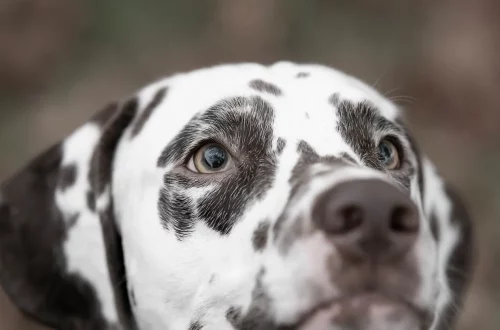
How to Help Your Dog After It Tore Up the Wall During a Thunderstorm
When a thunderstorm strikes, many dogs can become anxious and scared, leading to destructive behavior. Torn-up walls, chewed furniture, and other forms of damage are common manifestations of this fear. It’s not just a matter of cleaning up the mess; it’s essential to understand the underlying causes of your dog’s anxiety and to take steps to help them cope. Dogs experience storms differently than humans, often perceiving the loud noises and bright flashes as threats. This can trigger a fight-or-flight response, causing them to seek refuge in any way they can.
As pet owners, it can be distressing to witness such behavior. While it can be tempting to focus solely on repairing the damage, addressing your dog’s emotional state is just as important. Providing comfort and support can help your furry friend feel safer and more secure during similar situations in the future. Additionally, understanding how to manage their anxiety can prevent further destructive behavior and improve their overall well-being. This article will delve into effective strategies to help your dog after they’ve experienced a traumatic event like a thunderstorm and torn up the wall.
Understanding Your Dog’s Fear Response
To effectively help your dog after it has torn up the wall during a thunderstorm, it is crucial to first understand the fear response in dogs. Dogs are instinctively wired to react to perceived threats, and thunderstorms can trigger a range of responses from heightened alertness to outright panic. The sounds of thunder can be particularly frightening; dogs often hear frequencies that are inaudible to humans, making the booms even more intense for them.
During a thunderstorm, your dog may exhibit various signs of anxiety, such as panting, pacing, whining, or attempting to hide. These behaviors indicate that your dog is feeling stressed and is looking for a way to escape the situation. In some cases, this can lead to destructive behavior as they try to find a safe space or alleviate their anxiety through physical actions. Understanding this response is the first step in helping your dog cope with their fear.
One effective way to address your dog’s anxiety is to create a safe space for them during storms. This could be a cozy corner in your home where they feel secure, equipped with their favorite blanket or toys. Providing them a quiet, dark area can help minimize their exposure to the frightening sounds and flashes of lightning.
Additionally, consider using calming products such as anxiety wraps or pheromone diffusers. These can help soothe your dog by providing a sense of security and comfort. Training your dog to associate storms with positive experiences through desensitization can also be beneficial. Gradually exposing your dog to the sounds of thunderstorms at a low volume, combined with treats and positive reinforcement, can help them become more accustomed to the noise over time.
Immediate Actions to Take After the Incident
After your dog has caused damage during a thunderstorm, the immediate aftermath can be overwhelming. Your first instinct may be to clean up the mess and assess the damage, but it’s essential to prioritize your dog’s emotional well-being. Begin by providing comfort to your dog; speak softly to them and offer gentle petting to help them calm down. A reassuring presence can make a significant difference in how your dog feels in the aftermath of their fright.
Evaluate the damage done to your home and ensure that any hazardous materials, such as sharp objects or exposed nails, are removed. This is particularly important if your dog is still feeling anxious, as they may continue to act out or try to escape.
Once you have ensured your dog’s safety and comfort, consider redirecting their energy. Engaging them in a calm activity, such as a puzzle toy filled with treats or a gentle game of fetch in a quiet area, can help distract them from their anxiety and redirect their focus.
It’s also a good opportunity to assess the long-term strategies that can prevent such incidents in the future. Consider consulting with a professional dog trainer or a veterinary behaviorist who can provide tailored advice based on your dog’s specific needs and behaviors. They can help you develop a comprehensive plan that includes behavior modification techniques and stress-reducing strategies.
Long-Term Solutions for Thunderstorm Anxiety
Addressing thunderstorm anxiety in dogs is not just about managing the immediate aftermath; it’s also about implementing long-term solutions that can help reduce their fear over time. One of the most effective long-term strategies is to create a consistent routine that helps your dog feel secure. Dogs thrive on routine, and knowing what to expect can alleviate anxiety.
Incorporate training sessions that focus on desensitization to storm-related noises. Start by playing recordings of thunder at a low volume while offering treats and engaging in play. Gradually increase the volume as your dog becomes more comfortable with the sounds. This process can take time, so patience is essential.
Another long-term solution is to use calming supplements or medications as recommended by your veterinarian. These can help reduce anxiety levels during storms and make the experience more manageable for your dog. Always consult with a veterinarian before starting any new treatments, as they can provide guidance on the best options for your pet’s specific needs.
Socialization is also a key component in helping your dog cope with anxiety. Exposing them to various environments, sounds, and situations in a controlled manner can help build their confidence. Regular walks, trips to dog parks, and interactions with other dogs can provide positive experiences that counterbalance their fear of thunderstorms.
Finally, consider creating a “thunderstorm kit” that includes their favorite toys, blankets, and calming aids. Having these items readily available can make it easier to create a comforting environment when a storm approaches.
When to Seek Professional Help
While many dogs can benefit from the strategies mentioned above, some may require professional intervention to effectively manage their anxiety. If your dog’s fear of thunderstorms leads to severe destructive behavior, excessive panting, or signs of distress that do not improve with your efforts, it may be time to consult a professional.
Veterinarians, especially those who specialize in behavior, can assess your dog’s specific situation and determine if there is an underlying health issue contributing to their anxiety. They can also guide you in creating a tailored behavior modification plan that suits your dog’s unique needs.
Behaviorists can provide insight into your dog’s behavior and help you implement effective training techniques. They often utilize positive reinforcement methods, which can foster a trusting relationship between you and your dog while helping to alleviate their fears.
If your dog exhibits signs of extreme anxiety during storms, such as self-harm or aggression, it is crucial to seek professional help immediately. These behaviors indicate a deeper issue that needs to be addressed with the assistance of a trained professional.
In summary, while dealing with a dog that has torn up the wall during a thunderstorm can be challenging, understanding their fear response and implementing long-term solutions can significantly improve their quality of life.
**Disclaimer:** This article is not intended as medical advice. For any health-related concerns regarding your pet, please consult a veterinarian.




